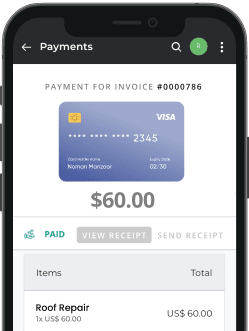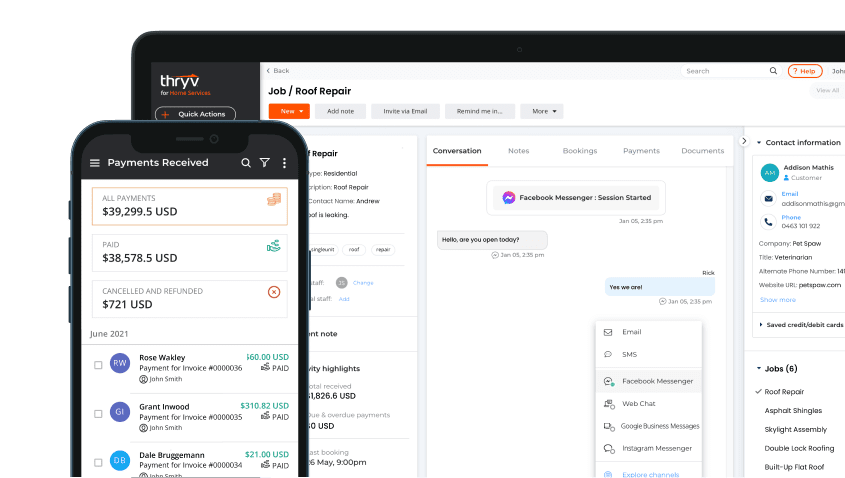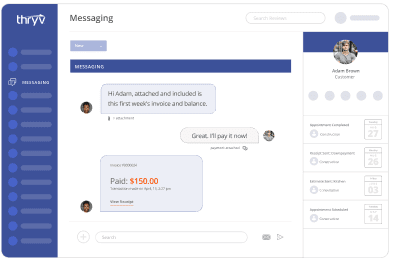How to earn your HVAC technician certification and HVAC license
If you’re considering a career in heating, ventilation, and air conditioning (HVAC), you’re entering a stable and in-demand field. But before you can start working legally as a technician, you’ll need to earn the right credentials. This guide covers everything you need to know to get your HVAC technician certifications, apply for your HVAC license, and take the next steps in your career.
Why get your HVAC certifications and license?
If you’re serious about a career in HVAC, getting certified and licensed isn’t just a legal box to check – it’s one of the best ways to set yourself up for success. Here’s why it matters:
- HVAC certification and licensing make you more hireable. Many employers won’t even consider candidates who don’t have both.
- You can earn more. Technicians with an HVAC license tend to make higher wages, especially those with specialized certifications.
- You open the door to more opportunities. Becoming an HVAC licensed contractor means you can bid on more jobs, work independently, or even start your own business.
- You build trust with customers. Credentials signal professionalism and safety.
- You stay legal and safe. HVAC work involves high-risk systems, so training matters.
How to earn your HVAC technician certification and HVAC license
Follow these seven steps and you’ll be on your way to earning your HVAC technician certification and HVAC licensing:
Step 1: Earn your high school diploma or GED
Most training programs require either a high school diploma or a GED. Subjects like math, physics, and shop class can give you a strong foundation for HVAC work.
Step 2: Enroll in an accredited HVAC training program
Look for programs at community colleges, vocational schools, or technical institutes that focus specifically on HVAC systems. These programs usually take anywhere from 6 months to 2 years to complete and cover a wide range of topics, including electrical systems, blueprint reading, temperature control, system diagnostics, safety protocols, and refrigeration principles.
When evaluating a program, make sure it offers a strong mix of classroom learning and hands-on experience. Labs or workshops should give you real-world exposure to HVAC systems and tools. Ideally, your program should also help you prepare for and schedule your EPA Section 608 certification exam.
Be sure to choose a program that is accredited by a recognized organization such as HVAC Excellence or PAHRA. Accreditation ensures the curriculum meets industry standards and that your training will be recognized by employers and state licensing boards.
Completing a formal training program is often the most critical first step toward earning your HVAC technician certification and building a successful career.
Step 3: Gain hands-on experience or complete an apprenticeship
Experience matters. Many states require a specific number of on-the-job training hours before granting an HVAC license, and this hands-on learning is where you’ll apply what you studied in the classroom to real-world systems. Gaining this experience not only sharpens your technical skills but also teaches you how to interact with customers, troubleshoot under pressure, and work as part of a team.
You can gain this experience in several ways:
- Apprenticeships: These are typically 3 to 5 years long and are offered through unions, private contractors, or trade organizations. They combine paid work with classroom instruction and are one of the most structured paths to becoming a fully licensed technician.
- On-the-job training: Some employers hire entry-level technicians and provide informal training under a licensed supervisor. This route offers more flexibility but may lack the formal structure of an apprenticeship.
- Internships or externships through HVAC schools: Some training programs offer partnerships with local HVAC businesses, giving students a chance to practice in real environments while still enrolled.
This step is not just a requirement – it’s one of the most important parts of your journey toward becoming a confident, capable, and employable technician.
Step 4: Get your EPA Section 608 certification
The EPA requires technicians who work with refrigerants to earn Section 608 certification under the Clean Air Act. This is a mandatory credential for anyone who installs, services, maintains, or disposes of equipment that could release ozone-depleting refrigerants into the atmosphere.
There are four types of Section 608 certification, and the one you need depends on the type of equipment you’ll be working with:
- Type I: For servicing small appliances (typically factory-sealed and containing less than five pounds of refrigerant).
- Type II: For servicing or disposing of high-pressure appliances, including residential air conditioning and commercial refrigeration units.
- Type III: For servicing or disposing of low-pressure appliances, such as large chillers.
- Universal: Covers all three types and is ideal for technicians who want the flexibility to work on a wide range of equipment.
You must pass a written exam administered by an EPA-approved organization to receive your certification. Many HVAC training programs offer prep materials and facilitate the testing process. This credential is a critical step not just for compliance but also for proving your readiness to handle one of the most sensitive and regulated aspects of HVAC work.
Step 5: Check your state’s HVAC license requirements
Every state sets its own rules for licensing, which may include passing one or more exams, proving a certain amount of hands-on experience, and submitting documentation of formal training. In some states, licensing is regulated at the state level, while in others, it may be controlled by counties or cities. Additionally, if you want to operate independently, you’ll need to secure an HVAC business license and possibly meet additional insurance and bonding requirements.
Here are a few examples of how requirements differ by state:
- Texas requires 48 months of practical experience within the past 72 months or a mix of experience and certification. Applicants must pass a licensing exam and provide proof of insurance.
- California mandates four years of journeyman-level experience within the past ten years and requires passing both a trade and business exam. Contractors must also carry a surety bond and insurance.
- Florida offers Class A and Class B licenses, each with different scope and experience requirements. Both require state certification exams and financial documentation.
- Massachusetts uses a tiered system based on hours of experience and education to qualify for refrigeration licenses, and it also requires a Universal EPA certification.
No matter where you live, it’s essential to check your specific local or state board for up-to-date requirements, application deadlines, and fees.
Step 6: Consider additional certifications
In addition to your basic HVAC certification, pursuing advanced credentials can help you grow in your career and access higher-paying roles. These certifications demonstrate expertise in specific systems, brands, or services and show that you’re committed to ongoing professional development.
Two of the most respected programs include:
- NATE (North American Technician Excellence): NATE certifications are widely recognized in the HVAC industry. Technicians can earn specialty credentials in areas such as air conditioning, heat pumps, gas furnaces, and more. These exams test both theoretical knowledge and practical application.
- HVAC Excellence: This organization offers both employment-ready and professional-level certifications. Some exams target entry-level technicians, while others are designed for experienced professionals seeking to demonstrate mastery in diagnostics, electrical systems, or environmental controls.
Other options include certifications in green energy systems, building performance, and specific equipment brands. Many employers prefer – or even require – these additional credentials, especially for technicians in supervisory or specialty roles. Earning them can help you stand out, qualify for promotions, and increase customer trust.
Step 7: Stay current with continuing education
Most states require continuing education to renew your HVAC technician license, typically every one to three years. These requirements often include coursework on updated safety standards, energy efficiency regulations, refrigerant handling, and changes to local or national building codes.
Continuing education can be completed through community colleges, vocational schools, union programs, manufacturer training sessions, and even online platforms approved by state licensing boards. Some programs are flexible and self-paced, while others may involve live instruction or in-person demonstrations.
Even in states that don’t mandate continuing education, it’s still a good idea to keep learning. The HVAC industry is constantly evolving with new technologies, smart home integrations, and eco-friendly systems. Staying current helps you maintain your HVAC technician certifications and improves your ability to troubleshoot, offer modern solutions, pass HVAC inspections, and stay competitive in the job market.
Starting your own HVAC business
After earning your HVAC license, you may be thinking about taking the leap and starting an HVAC business. In addition to licenses and certifications, having a variety of HVAC software tools can help you stay organized and efficient.
Here are the essential tools for an HVAC business you’ll want in your toolkit:
- Scheduling and dispatching tools: Keep jobs organized, avoid double bookings, and assign work with ease using HVAC service software.
- Estimates, quotes, and invoicing: Financial software for HVAC businesses simplifies estimates, invoices, and payments. These tools also help you confidently communicate pricing for HVAC services with clarity and consistency.
- Customer relationship management (CRM): A CRM helps manage client info, service history, and communications. It’s a must-have for growing customer trust.
- Marketing and sales tools: Good HVAC management software includes tools for managing email, SMS, social media, websites, and online listings that help customers find you faster and generate new leads.
Investing in the right HVAC business software helps you save time, reduce errors, and grow efficiently. That’s why so many HVAC professionals rely on Thryv, the industry-leading marketing and sales platform for managing small businesses. Whether you’re just starting out or you’re growing your team, Thryv’s software for HVAC companies can help automate and streamline all the tasks involved in growing your business, communicating with customers and teams, and managing your back office efficiently.



